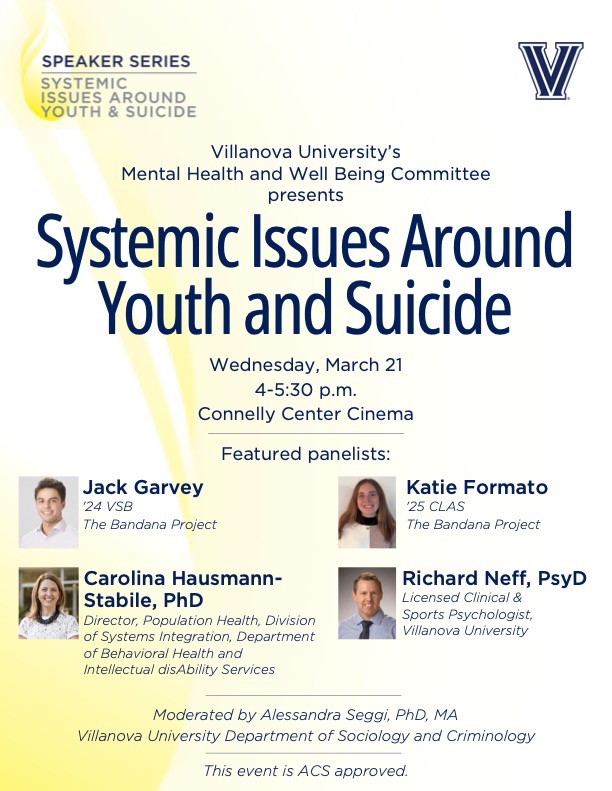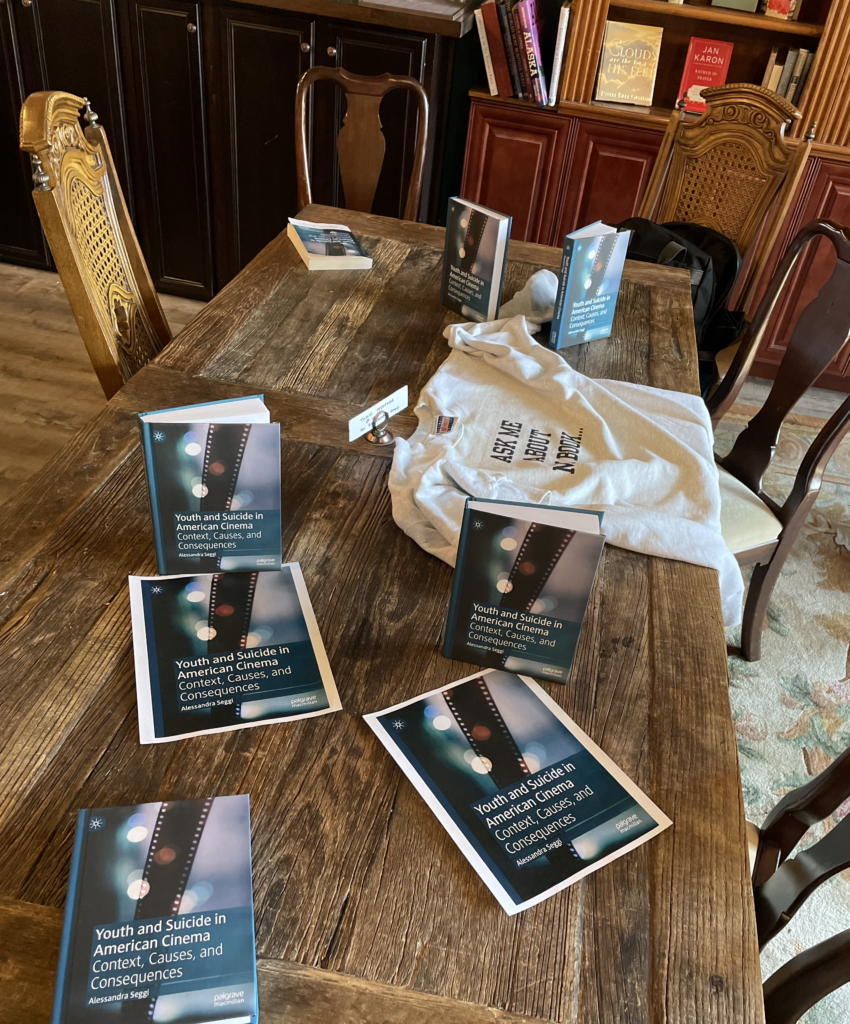Click on the titles below to watch panel discussions and/or conversations related to suicide and suicidality. Keep scrolling to read a summary for each event as well.
Understanding Suicide Prevention, Conversation with Jill Harkavy_Friedman,PhD, Villanova University, March 11, 2025
Systemic Issues Around Youth and Suicide Talk Series, Panel discussion, Villanova University, March 21, 2024
Author’s table, The Story Cafe, Nov. 11 & Dec. 2, 2024

Systemic Issues Around Youth and Suicide Talk Series – Conversation with Jill Harkavy-Friedman, PhD, Villanova, PA, March 11, 2025
Understanding suicide prevention
Jill Harkavy-Friedman, PhD, talked with me about the ins and outs of suicide prevention. Dr. Harkavy-Friedman is Senior Vice President of Research at the American Foundation for Suicide Prevention. This is the third talk in the Systemic Issues around Youth and Suicide talk series I created at Villanova University.
Systemic Issues Around Youth and Suicide Talk Series – Conversation with Anthony Rostain, MD MA, Villanova, PA, October 2, 2024
Bringing suicide out of the darkness
For the second talk in the Systemic Issues around Youth and Suicide talk series, I engaged in a heart-felt, honest conversation with Anthony Rostain, MD MA, about the importance of talking about suicidality. Professor Rostain is Chair of the Department of Psychiatry and Behavioral Health at Cooper University Health Care, and Professor of Psychiatry and Pediatrics at the Cooper Medical School of Rowan University.
Systemic Issues Around Youth and Suicide Talk Series – Panel discussion, Villanova, PA, March 21, 2024
Systemic issues around youth and suicide
I conceived of and organized a talk series on systemic issues around youth and suicide. I also moderated the first panel on March 21, which you can watch in its entirety below.

Author’s Table, The Story Cafe, Ardmore, PA, Nov. 11 & Dec. 2, 2023
The connection between youth and suicide
Spontaneous conversations with people in the cafe in order to raise awareness about the connection between youth and suicide.
